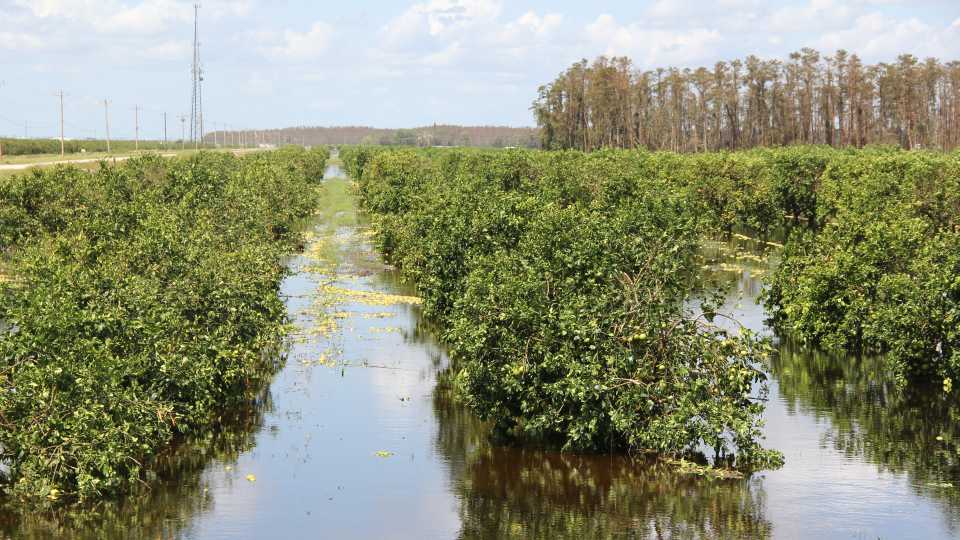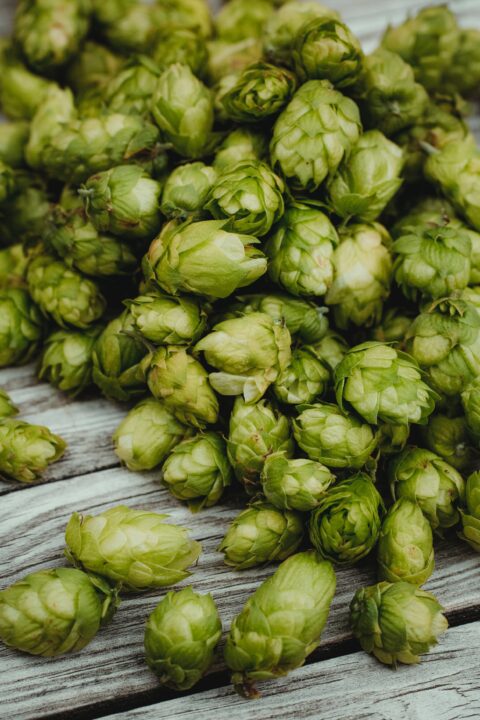Florida Citrus Associations Sharpen Focus on Industry Recovery

After Hurricane Irma moved through, the swamping of this Southwest Florida citrus grove was indicative of damage seen across the region. Photo by Monica Ozores-Hampton
Florida’s regional citrus associations are wrapping up another busy year as the fight against HLB continues. That challenge was complicated by Hurricane Irma’s landfall that impacted every citrus acre to some degree or another.
Assessing Impacts
According to Ron Hamel, Executive Vice President of the Gulf Citrus Growers Association, the region his association represents was the “poster child” for the damage brought on by the storm.
“Collier, Glades, Hendry, Lee, and parts of Charlotte counties took the brunt of 100+ mph sustained winds and several spun-off tornadoes,” he says. “Trees were uprooted and an average of more than 75% (many cases 80% to 90%) of the citrus crop was blown off the trees.”
Another cost was acres of damage to irrigation systems by uprooted trees.
“I would characterize Hurricane Irma’s damage and economic impact to the Gulf citrus growing region as the worst storm to pummel the region in the past 20 years,” Hamel says.
Growers in the Peace River Valley growing area also felt strong impacts from the storm.
“Wind damage occurred throughout the region with the heaviest wind damage to the eastern half of Charlotte, DeSoto, and Hardee counties,” says Steve Smith, Executive Director, of the Peace River Valley Citrus Growers Association. “Downed trees with heavy fruit loss occurred in those groves closest to the eye wall.”
Smith says prolonged flooding likely damaged citrus root systems across entire region.
Ray Royce, Executive Director of Highlands County Citrus Growers Association, says his members were in the crosshairs of the northeast quadrant of the storm for a long period of time.
“While we received quite a bit of rainfall, most our area groves did not experience the affects of long-term flooding, but did have heavy fruit loss to wind,” Royce says. “It seems most folks experienced drop rates in the 40% to 75% range with early varieties being worse than Valencia.”
While wind damage was not as a major factor in the Indian River region, flooding was heavy as the storm passed.
“Central St. Lucie and southern Indian River counties were directly in the path of a major feeder band of rain, which brought more than 20 inches of rain to the area,” says Doug Bournique, Executive Director of the Indian River Citrus League. “The water management system simply is not capable of handling that volume of water. We had standing water in this region from more than a week, so we are drying out and watching how the fruit responds, hoping it holds on to the tree.”
Action in the Aftermath
While Hurricane Irma had historic impacts on the state’s citrus industry, this is not the first storm most growers have faced. In addition to cleaning up groves, uprighting trees, documenting damage, and replanting, Hamel says some of his member growers worked to put a public face on the storm.
“Growers are following up with any of the agencies that are involved in relief efforts and have engaged in industrywide efforts to garner federal disaster relief funds to help growers sustain their operations,” he says. “They also have been hosting members of the media, agency leaders, as well as state and national elected officials who have expressed interest in getting boots on the ground to look at the damage.”
Smith says Peace River growers are cleaning up and repairing damaged structures and harvesting the crop remaining in groves. Budgets allowing, he says growers have plans to replant trees lost to the storm to begin the long recovery process.
“Our growers pretty much have returned to their normal production programs despite worrying about how severely revenue streams may be impacted by the storm and any action, or inaction, by the government in terms of relief,” Royce says.









